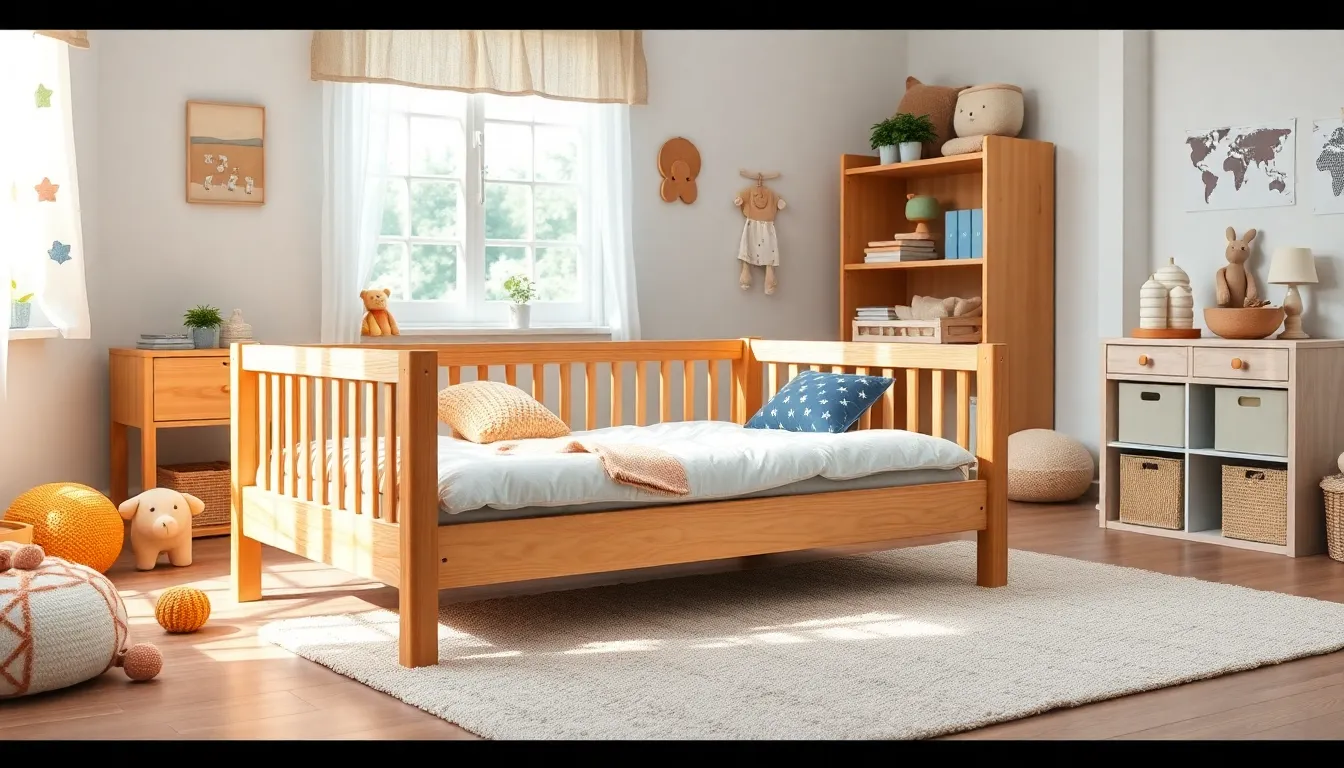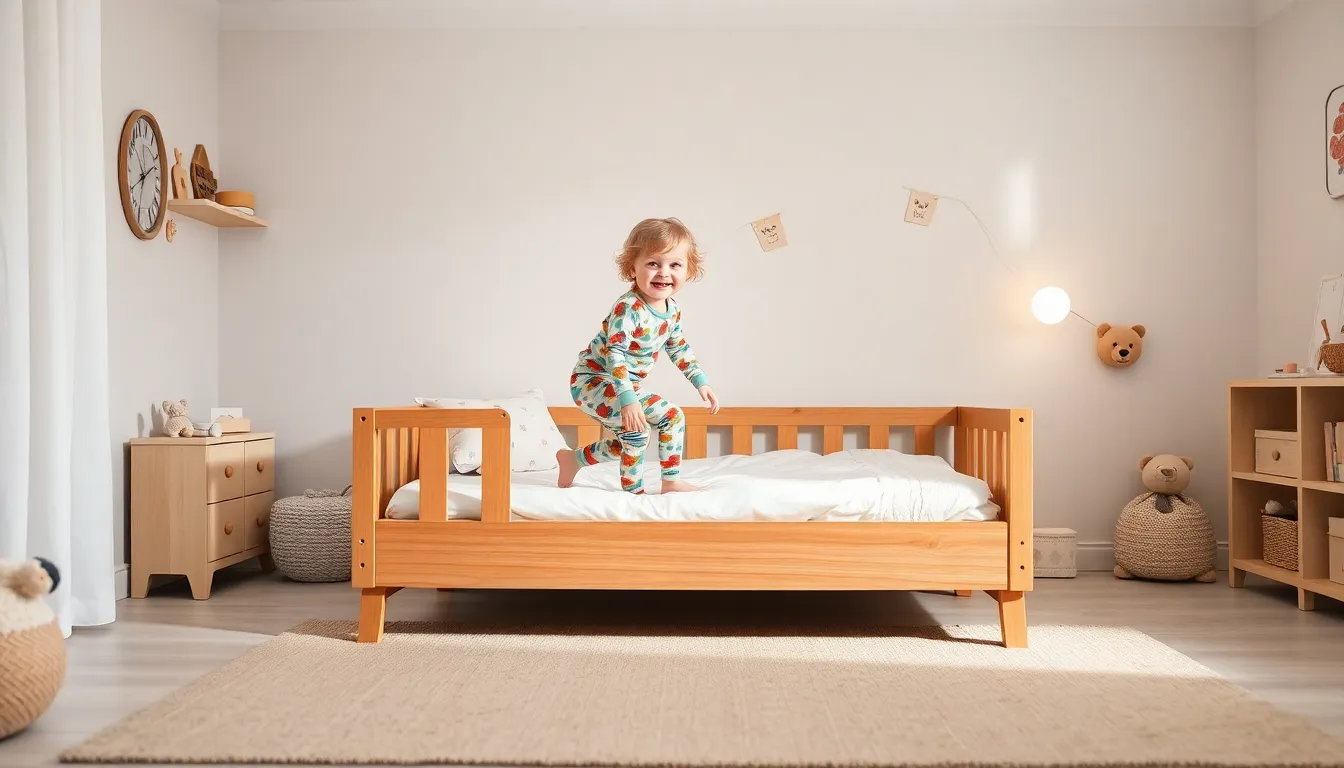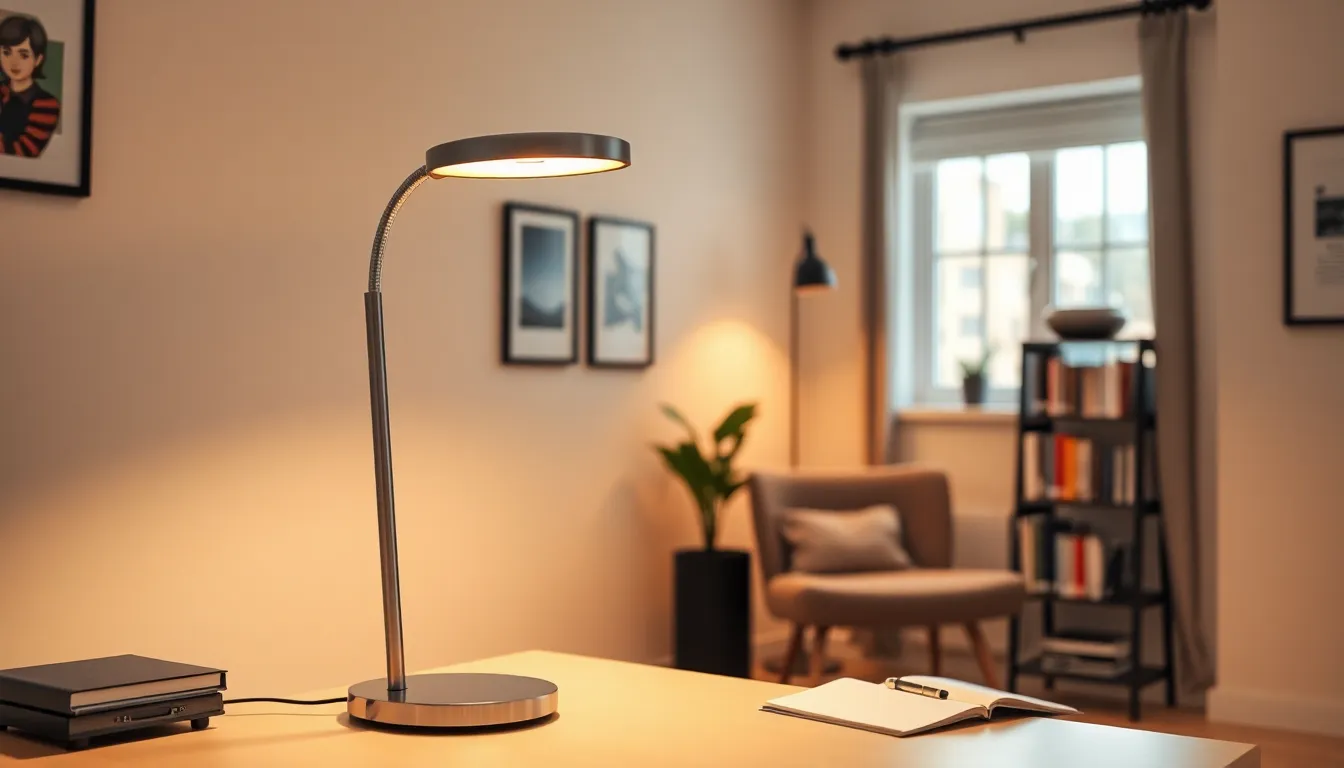Transitioning from a crib to a toddler bed is a significant milestone for both parents and children. A Montessori toddler bed offers a unique solution that aligns with the principles of independence and freedom of movement. Designed to empower toddlers, these beds promote self-sufficiency and encourage kids to explore their environment safely.
Incorporating a Montessori toddler bed into a child’s room can foster a sense of ownership and comfort. With their low-to-the-ground design and open sides, these beds make it easy for little ones to climb in and out on their own. This not only boosts confidence but also enhances their sleep experience, making bedtime a more positive routine. Discover how a Montessori toddler bed can transform your child’s sleeping habits and support their development.
Table of Contents
ToggleOverview Of Montessori Toddler Beds
Montessori toddler beds offer a unique design that fosters independence for young children. These beds are crafted to support a child’s development and promote a comfortable sleeping environment.
Key Features
- Low Height: Many Montessori toddler beds provide a low profile, allowing children to climb in and out easily.
- Open Design: Beds often feature open sides, ensuring safety while enabling access.
- Natural Materials: Most beds utilize non-toxic, eco-friendly materials, promoting a healthy sleeping atmosphere.
- Minimalistic Style: Simple designs blend seamlessly with various room aesthetics, encouraging a sense of ownership.
- Adjustable Options: Some models offer convertible features, evolving as a child’s needs change.
Benefits For Toddlers
- Promotes Independence: Children gain confidence by managing their own sleep space.
- Encourages Self-Comfort: Familiar surroundings help ease nighttime fears and improve sleep habits.
- Enhances Motor Skills: Climbing in and out of bed supports physical development.
- Fosters Decision-Making: Kids choose when to go to bed, cultivating a sense of control and responsibility.
- Supports Transitioning: A Montessori bed provides a smoother transition from crib to bed, maintaining a child’s routine.
Choosing The Right Montessori Toddler Bed


Selecting the appropriate Montessori toddler bed involves considering several key factors that cater to a child’s developmental needs. Ensuring a perfect fit leads to a more comfortable and encouraging sleep environment.
Size And Dimensions
Choosing the right size and dimensions for a Montessori toddler bed is crucial. Bed sizes typically include twin, crib, and special Montessori designs.
- Twin Size: Offers longer usability as the child grows, accommodating both toddlers and preschoolers.
- Crib Transition Size: Designed for a seamless move from crib, these beds cater to smaller spaces.
- Montessori Low Bed: Positioned close to the floor allows toddlers easy access and promotes independence.
Selecting a bed with dimensions that fit the child’s room is essential. The bed should leave enough space for play and other furnishings to maintain a functional layout.
Materials And Safety Standards
Prioritizing materials and safety standards when choosing a Montessori toddler bed ensures a healthy sleep environment.
- Natural Materials: Opt for beds made from organic wood, which lacks harmful chemicals or toxins.
- Non-Toxic Finishes: Ensure finishes and paints are free from lead or volatile organic compounds (VOCs).
- Durable Construction: Solid, sturdy designs minimize risks of tipping or breakage, enhancing overall safety.
Compliance with safety standards is essential. Look for certifications like ASTM (American Society for Testing and Materials) and CPSC (Consumer Product Safety Commission) to assure adherence to safety regulations.
Popular Montessori Toddler Bed Options
Several popular Montessori toddler bed options cater to varying needs and preferences. These beds combine functionality with aesthetic appeal, supporting a child’s independence and comfort during sleep.
Wooden Beds
Wooden Montessori toddler beds offer durability and a natural aesthetic that complements various room designs. Common wood types include solid pine, maple, and birch, known for their sturdiness and eco-friendliness. These beds typically feature safe, non-toxic finishes to maintain a healthy sleeping environment. The low-profile design promotes easy access for toddlers, fostering independence. Brands like Lullaby Earth and Oeuf provide excellent examples of wooden beds that meet safety standards while maintaining minimalist charm.
Convertible Beds
Convertible Montessori toddler beds provide flexibility as a child grows. These beds often transition from toddler beds to twin or full-size beds, extending their usability. Many models include adjustable side rails for added safety, ensuring toddlers feel secure during sleep. Common designs feature simple mechanisms for easy conversion, making them ideal for families looking to invest in a long-lasting sleep solution. Brands such as IKEA and The Cradle Company offer well-reviewed convertible options, emphasizing both practicality and style.
Tips For Transitioning To A Montessori Toddler Bed
Transitioning to a Montessori toddler bed involves meticulous planning and consideration. Implementing strategies that promote comfort and safety is essential during this process.
Preparing The Toddler
Preparing the toddler for the transition requires clear communication and gradual adjustments. Begin by discussing the new bed and its benefits, emphasizing independence and comfort. Involve the child in choosing the bed to increase their interest and excitement. Set a consistent bedtime routine to help them adapt. Gradually introduce the bed by allowing the child to play or read in it during the day, fostering familiarity. Encourage them to climb in and out independently to build confidence.
Creating A Safe Sleep Environment
Creating a safe sleep environment is crucial for a successful transition. Ensure the toddler bed is positioned away from windows, heaters, or any furniture with sharp edges. Use a low-profile mattress to minimize the risk of falls, and consider adding a soft rug beside the bed. Install safety gates if needed to restrict access to areas that pose hazards. Implementing dim lighting and removing distractions, like toys or electronics, can also help create a calm atmosphere conducive to sleep. Regularly check for any loose parts or hazards to maintain safety standards.




